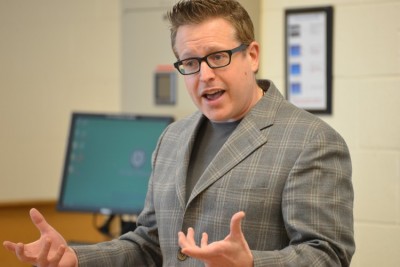Editor’s Note: The following piece — authored by Ronald Beghetto, professor of educational psychology and an expert in creativity — originally appeared on the Corwin Press Corwin Connect blog.

What if we, as instructional leaders, supported creativity in teaching and learning? I mean really supported it. Here are a few things we might expect to see (and hear). We would see ourselves leading by example. We would view uncertainty as a sign that new thought and action is needed (rather than ignore it or try to quickly resolve it by force-fitting solutions). We would see ourselves engaging in possibility thinking. And hear a shift in our language moving away from “This is the way it is” and toward “How could or should it be different?” We would demonstrate a willingness to seek out diverse perspectives and honestly critique our ideas and beliefs (even our most cherished ones). We would also see ourselves stepping into uncertainty — taking measured action; failing fast, but learning even more quickly; and making small, but meaningful progress.
In short, we would see ourselves taking beautiful risks.
Beautiful risks bolster confidence, deepen understanding, and lead to new ways of thinking and acting. Taking beautiful risks has a cascading effect on others — encouraging them to take similar risks. As a result, we would see a growing recognition amongst teachers and students that creativity is not about “anything goes” or even “thinking outside the box,” but knowing when and how to strike a better balance between meeting curricular goals and, at the same time, providing students opportunities to develop and express their understanding of academic content in new and meaningful ways.
Creativity is not something that can be given or taken away. It is a capacity that all students, teachers, and instructional leaders always and already have available to them.
When we encourage and take beautiful risks, we would see teachers making slight changes to their existing curriculum to create more room for original student expression. We would see students taking intellectual risks in the form of seeking out new learning challenges, asking for assistance when needed, and being willing to make mistakes in an effort to learn more deeply. We would also see a movement away from learning academic content as a means to its own end and, instead, see academic content put to creative use. This, in turn, allows us to move away from underestimating what young people are capable of doing and toward providing opportunities for them to demonstrate the profound impact they can have on their own learning and lives.
When we encourage and take beautiful risks, we do so out of a recognition that learning and creative expression are complimentary (not contradictory) goals. We also recognize that beautiful risks do not require making radical changes or implementing yet another mandated reform initiative. Indeed, the last thing we want is a No Child Left Uncreative act.
Creativity is not something that can be given or taken away. It is a capacity that all students, teachers, and instructional leaders always and already have available to them. All that is needed is an opportunity and willingness to put it to use.
Put simply: If we really want to help teachers and students take the risks necessary to reclaim their creativity in schools and classrooms, then we need to start with ourselves.
Access the original blog post by Ronald Beghetto on the Corwin Press website. Beghetto is the author of the newly published book Big Wins, Small Steps: How to Lead for and with Creativity (Corwin Press, 2016).
 Facebook
Facebook
 Twitter
Twitter
 LinkedIn
LinkedIn
